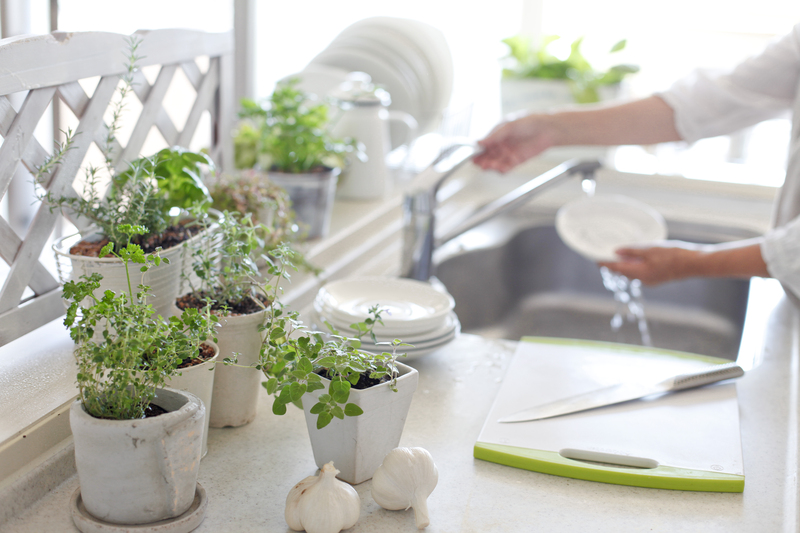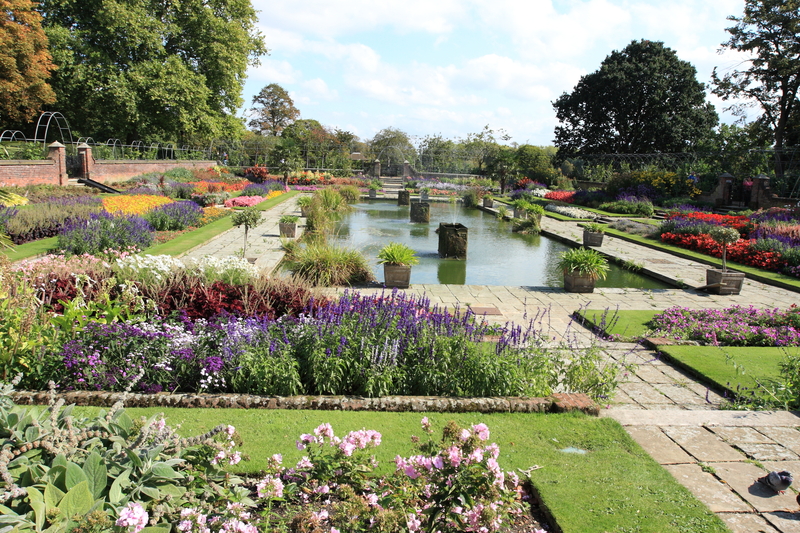Top secrets to gardening with canine companions
Posted on 16/06/2025
Top Secrets to Gardening With Canine Companions
Gardening is a rewarding activity, full of lush growth, vibrant colors, and the satisfaction of watching your plants thrive. For pet lovers, sharing the garden with our canine companions adds another layer of joy and fulfillment. But gardening with dogs comes with unique challenges. From trampled flower beds to curious diggers, our furry friends can sometimes disrupt the order of our green spaces. However, with the right strategies, you can create a harmonious garden where both plants and pups flourish!

Understanding Dog-Friendly Gardening
Creating a dog-friendly garden involves more than just preventing damage to your plants--it's about designing a space where both your four-legged friends and garden can thrive together. Here, we'll uncover the top secrets to successfully gardening with dogs, keeping both your blooms and your beloved pets happy and healthy.
Why Is Gardening With Dogs Different?
- Canine curiosity leads to exploration, sniffing, and even nibbling on plants.
- Dogs love to dig, which can unearth plant roots and bulbs.
- Marking territory may harm your grass and garden beds.
- Some plants are toxic to dogs and must be avoided.
- A garden can be a wonderful source of enrichment and exercise for your pup.
Knowing these challenges allows you to implement dog-friendly gardening solutions that keep your landscape beautiful and your canine companions safe.
Top Secrets for a Successful Garden With Your Dog
1. Choose Safe and Dog-Friendly Plants
Your first priority should be to ensure the safety of your pets. Some common garden plants are toxic to dogs, including but not limited to lilies, foxglove, azaleas, sago palms, and tulips. Research every plant before introducing it into your garden:
- Safe plant choices: Sunflowers, snapdragons, marigolds, rosemary, thyme, and basil are non-toxic to dogs.
- Avoid: Oleander, daffodils, peonies, chrysanthemum, and autumn crocus, as these are dangerous to pets.
- Be cautious: Even "safe" plants can cause digestive upset if eaten in large quantities, so monitor your dog's behavior in the garden.
2. Designate a Dog Zone
One of the top secrets to dog-friendly gardening is giving your canine companion a dedicated space to play and relax. This may include:
- A digging pit or sandbox filled with soft soil or sand, where your dog can indulge their digging instincts without destroying your flower beds.
- Shaded resting areas with comfortable surfaces (like mulch, grass, or even a cool stone patio) for napping on hot days.
- Paths for zoomies: Dogs love to run, so include a clear path or loop in your garden design for your pup's dashes.
3. Use Hardscaping to Protect Delicate Areas
Physical barriers can make a world of difference. Here are some popular choices:
- Low fencing: Decorative but functional, these keep dogs from wandering into sensitive garden beds.
- Raised beds: These deter most dogs from jumping in while making it easier for you to tend your plants.
- Mulch or stone paths: Guide your pet's movement and discourage them from trampling fragile blooms.
4. Train Your Dog to Respect the Garden
Positive reinforcement is essential in cultivating good doggy garden habits:
- Reward your dog with treats and praise when they use designated play areas.
- Teach commands like "leave it," "off," and "stay" to redirect unwanted behaviors.
- Supervise your dog during garden time, especially when introducing new rules or plants.
- Consistency is key--correct gently but firmly. Over time, your dog will learn which areas are off-limits.
5. Choose Dog-Resistant Ground Covers
Certain ground covers can withstand heavy foot (and paw) traffic better than others:
- Clover: Tough, resilient, and able to handle running and playing.
- Elfin thyme: Drought-tolerant, fragrant, and low-growing.
- Bermuda grass or buffalo grass: Stand up to regular dog wear and tear much better than other varieties.
- Hardwood mulch: Avoid cocoa mulch, which is toxic to dogs, and opt for cedar or pine mulch instead.
6. Secure Your Garden
Safety is paramount. You want to protect both your dog and your garden:
- Solid fencing: The perimeter should be high enough to prevent jumping and secure enough to prevent digging under.
- Check for any toxic plants or chemicals that might have blown in from neighboring areas.
- Install gates: Gates can help create "no dog zones," protecting vulnerable plantings or new growth.
7. Avoid Harmful Chemicals and Fertilizers
Many gardening products are dangerous to pets. Common offenders include slug bait, certain weed killers, insecticides, and traditional fertilizers containing bone meal or blood meal. Switch to pet-safe products such as:
- Organic compost: Ensures no harmful synthetic chemicals.
- Slug traps, neem oil, and diatomaceous earth (used carefully) are safer pest control alternatives.
- Look for labels specifying pet-friendliness whenever possible.
Fun Activities to Share With Your Dog in the Garden
Gardening is about more than just planting. It's a holistic experience that enhances the bond between you and your furry friend:
- Agility courses: Use simple obstacles like tunnels or weave poles to create a fun course.
- Water games: If using a hose or sprinkler, many dogs love to chase the spray.
- Training sessions: Practice obedience or learn new tricks in the fresh air.
- Hide treats or toys around the garden for a scavenger hunt.
Encourage Natural Behavior
- Sniffing zones: Plant aromatic, non-toxic herbs for your dog to explore.
- Interactive toys or balls can redirect digging or chewing impulses away from your flora.
Seasonal Tips for Gardening With Dogs
Spring
- Introduce new boundaries and reinforce training early in the season.
- Monitor for pesticides or fertilizers used on neighboring properties.
- Check for ticks and pests after garden play.
Summer
- Provide ample water and shaded areas to prevent overheating.
- Watch for signs of heatstroke, especially in short-nosed breeds.
- Avoid walking or letting your dog play on hot paving stones to prevent paw pad burns.
Autumn
- Keep fallen leaves tidy to prevent mold and fungus growth, which can be harmful if ingested.
- Plant bulbs safely out of reach--many (like tulips and daffodils) are toxic to dogs.
Winter
- Prevent access to ice melts and antifreeze, which are dangerous to pets.
- Protect tender plants and mulch with pet-safe options so dogs don't ingest anything harmful.
- Wipe paws clean after snowy walks--salt and chemicals may cling to the fur.
Bonus Secrets: Canine Garden Etiquette Training
Building canine garden etiquette is an ongoing process. Here are expert tips to make it easier and more effective:
- Be patient: Habits take time to form, especially in puppies or newly adopted dogs.
- Always keep positive training at the forefront--scolding can create negative associations with your garden space.
- Enlist help! If your dog is especially stubborn, consider group training classes or consulting a professional behaviorist.

Frequently Asked Questions (FAQ) About Gardening With Dogs
How can I stop my dog from digging up my plants?
- Provide a designated digging area filled with loose soil or sand.
- Redirect your dog when you catch them digging where they shouldn't.
- Use physical barriers or landscaping rocks to deter digging in sensitive areas.
What should I do if my dog eats a plant and I'm not sure it's safe?
- Remove any pieces from their mouth immediately.
- Look up the plant's toxicity and observe your pet for symptoms like vomiting, drooling, lethargy, or diarrhea.
- Contact your veterinarian or animal poison control for advice as soon as possible.
Which mulches are safest for dogs?
- Cedar mulch, pine mulch, and shredded bark: These are generally considered safe.
- Avoid cocoa mulch: It contains theobromine, toxic to dogs.
Can dogs and vegetable gardens mix?
- Yes, but precautions are needed. Fence off vegetable beds, teach dogs not to dig or eat plantings, and ensure no pesticides or fertilizers unsafe for pets are used.
Conclusion: Cultivate Joy With Dog-Friendly Gardening
Gardening with canine companions is possible--and immensely rewarding--with a bit of planning, patience, and creativity. Incorporating dog-friendly gardening techniques can lead to a safe, harmonious, and beautiful outdoor space for all. Remember:
- Choose plants wisely and keep safety top of mind.
- Include spaces designed specifically for canine play and relaxation.
- Use training, boundaries, and landscaping hardscapes to protect both plants and pups.
- Opt for pet-safe gardening products and maintain vigilant supervision.
With these top secrets to gardening with your furry friends, you'll create a vibrant garden that's both a botanical haven and a puppy paradise. Happy gardening!



